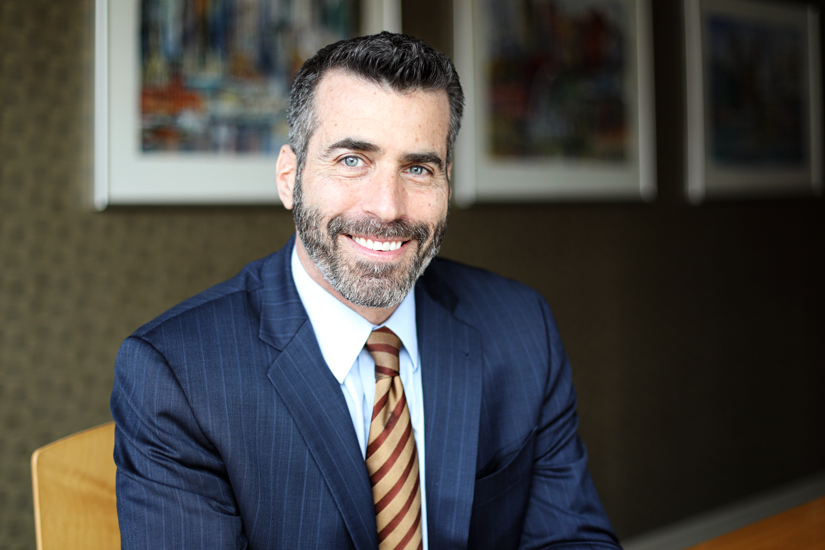Everyone has seen the Hollywood trial where the underdog defense team produces evidence in the final hour and uses it to cross-examine the plaintiff. The jury gasps, the innocent defendant is saved, justice has prevailed, and the audience cheers. That is, until the attorney in the room sighs and says, “That would never happen in a real trial.”
Usually, that’s true, but in Michael Appelbaum’s case, the Hollywood version really happened, thanks to his social media investigation skills.
“This was honestly a case I was prepared to lose,” says Appelbaum, a partner at Goldberg Segalla with many years of trial experience, of the initially routine automotive liability case. Two drivers both claimed to have crossed an intersection with a green light while the other had the red light, resulting in an accident. Unfortunately for Appelbaum’s client, a UPS driver came forward as a witness, claiming he saw the defendant run the red light while on the phone.
“I believed my driver, but I admit he does not make the best impression,” Appelbaum says. “Whereas the plaintiff was very well put together. He was very polished, very well spoken, very likable—just a down-to-earth kind of guy. And I thought [the jury] would really like this guy.”
To avoid a scenario where the plaintiff and his client were each 50 percent at fault for the accident, Appelbaum knew he had to find a way to cast doubt on the witness’s testimony. That’s when social media evidence changed everything.
“There is relatively little case law available on the use of social media, especially on its use in the courtroom,” Appelbaum explains. However, litigators have increasingly used social media when investigating the opposing side. Many people maintain public accounts, making obtaining information somewhat easy.
“The challenge is how we use the information at depositions and at trial. Just one week before my trial, one of my partners attempted to use the same type of evidence in another court, and he was denied outright. Judges and attorneys are still trying to figure this out,” Appelbaum says.
Appelbaum has handled numerous cases where social media evidence was used at a deposition. Usually, the evidence constitutes pictures or video of the plaintiff engaged in activities that an injured person shouldn’t be doing. But in these circumstances, the evidence has to be turned over to the plaintiff’s counsel before the deposition to avoid surprise.
“There are no ‘gotcha’ moments allowed,” Appelbaum says. “If you try to surprise the plaintiff and catch them in a lie, you risk being precluded from introducing the evidence at trial.”

This trial was unique both because the information Appelbaum found came from a nonparty witness and because he would be questioning the witness, not the plaintiff. This allowed for that cinematic element of surprise typically reserved for fictional trials.
The witness had testified multiple times that he and the plaintiff had never met and had no connections whatsoever. But what Appelbaum uncovered while scouring Facebook and other social media platforms told a different story.
Once the witness appeared in person in the courtroom, Appelbaum knew he wasn’t mistaken: the Facebook photos clearly showed the plaintiff and witness together. But he still had to turn this information into evidence.
“If I just opened up with, ‘Do you have a Facebook account?’, he could have said no, and I would have been out of luck,” Appelbaum says. “I had to establish sufficient evidence that tied him to the Facebook account before revealing the source of my information.”
Appelbaum asked the plaintiff about family members, friends, and hobbies, such as fishing. “Counsel objected multiple times because he had no idea where I was going with this,” he recalls. “The judge was also confused, leading me to beg for his patience several times.”
Finally, after confirming he had accurate information on the witness, Appelbaum asked point-blank if he had a Facebook account. At first, he denied it, but Appelbaum established the account was indeed his.
And then it was time to reveal three photos he had uncovered that showed the witness and plaintiff acting chummy together. The final challenge was getting the witness to acknowledge it was indeed him in the photos with the plaintiff. Only then could Appelbaum enter the photos as evidence to the jury.
Luckily, the witness squirmed. “I made it clear that I knew about his personal life, and he was visibly uncomfortable. When shown the first two photographs, the witness flat out denied that the man who was obviously the plaintiff was in fact him. Perhaps it was the mounting discomfort that caused him to change his tactic on the fly,” Appelbaum says. “When I showed him the third and final picture, I asked the question in my most snarky and incredulous tone of voice. After he identified himself, I again pointed to the man that I knew was the plaintiff and asked who it was. His [affirmative] response set out a collective gasp from the jury.”
Even then, the witness maintained he had never met the plaintiff. But it was too late—no one believed him. Appelbaum was prepared to show a video of the two discussing their shared interest in fishing, but opposing counsel advised that the video would not be necessary. The claim was discontinued on its merits in open court, and the plaintiff was left with nothing.
“Social media evidence is investigatory material that attorneys can use in many different ways and should be a part of every litigator’s tool kit,” Appelbaum says. “Getting your hands on it is one thing; being able to use it the right way is another. There’s a bit of a blueprint here.”
***
Diamond Medical Examinations:
“Mr. Appelbaum is honest, diligent and competent. He has extensive experience and an in-depth understanding of injuries, which makes him consistent and well prepared. He has the ability to see all details of a case to arrive at sensible conclusions.”
–Emma Zawisky, Director of Operations

